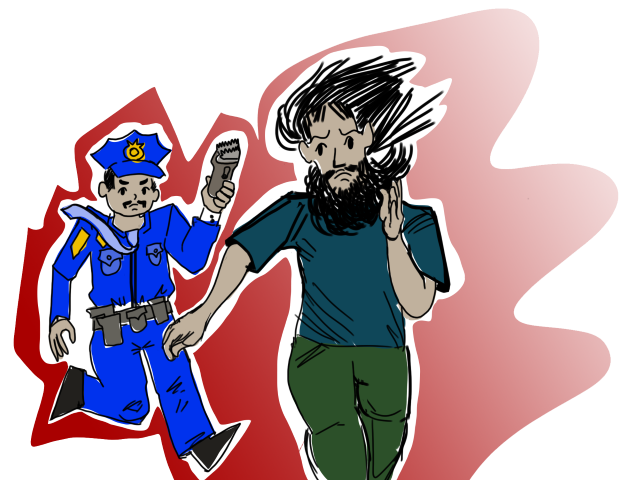
Facial hair fads and facts
By Michele Provenzano, Staff Writer
In the past week or so, you may have noticed more beards and moustaches around than usual. Each November, many folks with a gift for hair follicles grow out their facial hair to support the Movember movement. This event has been running since 2003—over a decade. The Movember Foundation aims to raise awareness and support for often overlooked men’s health problems: Prostate cancer, testicular cancer, and men’s mental health issues and suicide prevention. Moustaches are grown to start conversations surrounding men’s health and to fundraise for these causes.
Movember is an example of society influencing the hairy decision many must make—to shave, or not to shave. Throughout history, facial hair has had many meanings attached to it. Perceptions of facial hair have fluctuated throughout the eras as well as between different regions of the world. Christopher Oldstone-Moore, the Senior Lecturer of History at Wright State University and author of Of Beards and Men, insists that beards serve as an index over time to the evolution of what it means to be a man. Let’s visit some notable points in world history that reveal the significance of facial hair or lack thereof.
In 17th century Russia, Peter the Great banned beards and implemented a beard tax. Men had to pay up to 100 rubles annually to acquire a medallion which served as a license to sport a beard. A late version of the medallion had the phrase “the beard is a superfluous burden” inscribed on one side. Police could forcibly and publicly shave those who had a beard and had not paid the tax. Peter did so because he traveled all over the world, and after going to Western Europe, wanted to bring his perception of the modernity of a shaven face in hopes of enriching Russia.
In ancient Egypt, shaving one’s facial hair was the norm. Yet pharaohs—both male and female—often wore false metal beards because they were a sign of sanctity. A gold chin strap was held in place, attached to a ribbon tied over the head. This was done for religious reasons, as the Egyptian leaders wanted to look like Osiris—God of the underworld.
Confucius, the influential ancient Chinese philosopher and teacher who lived around 500 BC, believed that since one’s body was a gift from their parents, one should not alter it in any way—including the alteration that is the removal of facial hair.
Beards have also served as a motif of wisdom and knowledge. In ancient Greece, Rome, and other societies, philosophers went without shaving and grew out large beards. They believed that wisdom was achieved through understanding and following the rules of nature—beards being a sign of that obedience.
Alexander the Great made the men in his army shave, as he saw beards as dangerous in hand-to-hand combat—the issue was that enemy could easily grab onto one from behind. However, when their facial fur grew back, soldiers began to keep them—displaying confidence in their own abilities.
A beard symbolized a knight’s dignity and virility in the Middle Ages. Beards were regarded as significant. Touching another man’s beard was a highly offensive gesture that could result in a duel.
Beards rose in popularity in the mid-Victorian period in Europe as facial hair was believed to have a medical benefit. Doctors would prescribe patients to grow a beard as a remedy for common maladies such as a sore throat. A beard was believed to be a sort of natural air filter, and capable of preventing illnesses.
With all these scruffy facts in mind, it is interesting seeing where our perceptions on beards have arrived now. Movember is a pretty noble use of beards—better than many of their past roles. For more information on the Movember movement including ways to get involved, visit ca.movember.com.



